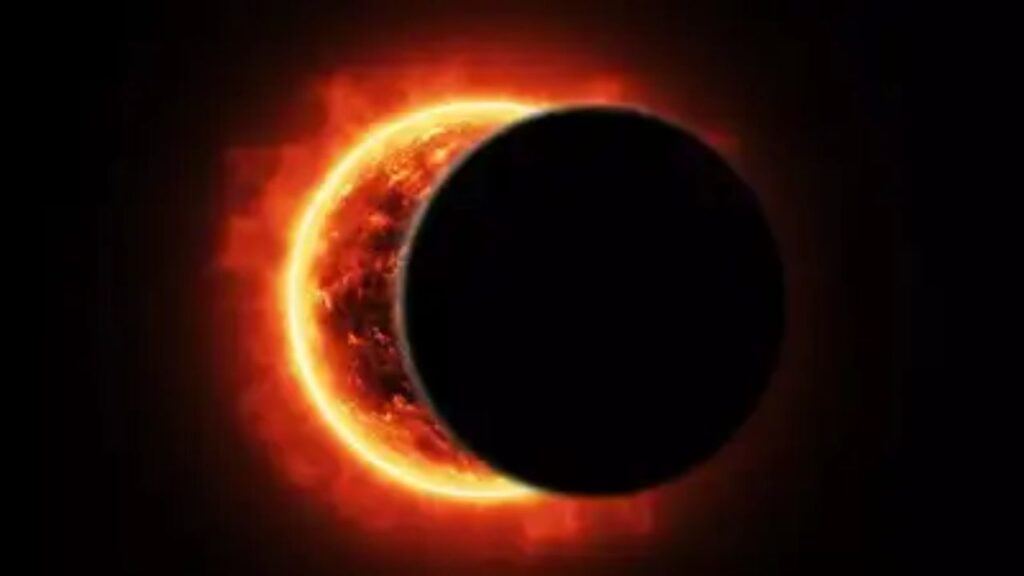
Astronomy enthusiasts across the globe are gearing up for the last solar eclipse of the year, set to occur on the night of September 21, 2025. This celestial event will be a partial solar eclipse, where the Moon partially blocks the Sun, creating the impression that a piece of the solar disk has been “bitten” away.
When Will the Eclipse Take Place?
The event begins at 10:59 PM IST on September 21, reaches its maximum at 1:11 AM IST on September 22, and concludes at 3:23 AM IST the same night. In some parts of the world, nearly 85% of the Sun’s surface will be obscured by the Moon.
Will India Witness the Eclipse?
Unfortunately, the phenomenon will not be visible from India, as it occurs well after sunset when the skies are already dark. Observers across Asia, Africa, Europe, and the Americas will also miss this eclipse.
The next opportunity for Indians to witness a solar eclipse will be on August 2, 2027, when most parts of the country will be able to observe a significant partial eclipse during the late afternoon and evening.
Where Will the Eclipse Be Visible?
The September eclipse will be best visible from the Southern Hemisphere. Viewers in eastern Australia, New Zealand, Antarctica, and several Pacific islands will be able to see the Moon partially covering the Sun. The most dramatic views will be witnessed from Antarctica, where a major portion of the solar disk will be obscured.
How to Watch Safely
Astronomers strongly advise using certified solar eclipse glasses or eclipse viewers for safe observation. Ordinary sunglasses or improvised filters are not adequate for eye protection. Looking directly at the Sun without proper safety gear can cause permanent eye damage.
Unlike a total solar eclipse, where it is briefly safe to remove glasses during totality, this event is only partial—meaning protective glasses must be worn throughout the observation.




